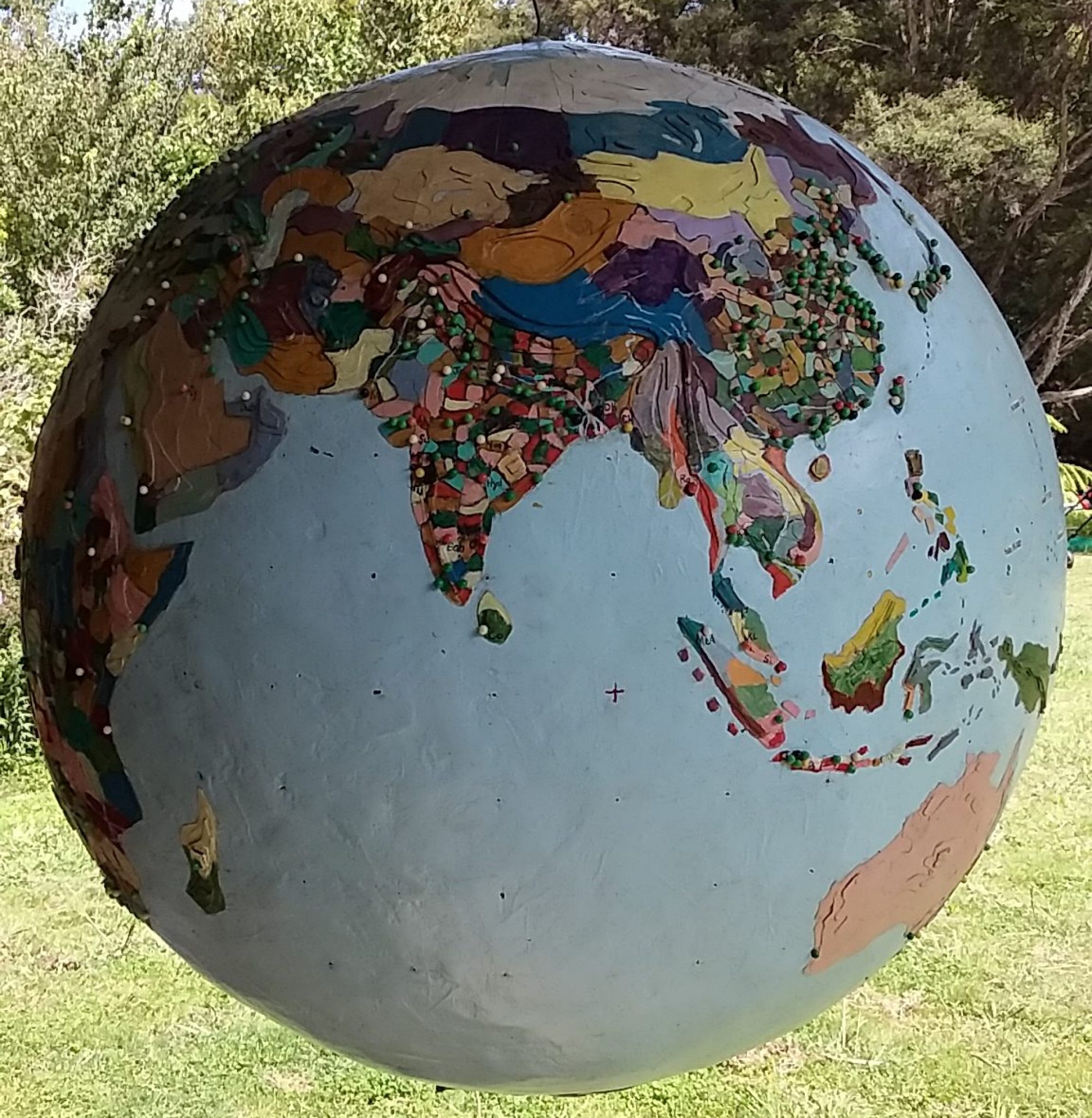millisphere (noun): A discrete region of approximately 1000th of the total world population – a bit over 7 million people but anywhere between 3.5 million and 14 million will do. A lens through which to examine human geography.
We have been Wwoof hosts (willing workers on organic farms) since 1976, and over the years we’ve hosted young travellers from all over the world.
Last year we had our first South Americans – from Chile.
Danielle was a young vintner from Santiago working the season in New Zealand vineyards and Jose was a recent English language graduate from southern Chile, and I took the opportunity to quiz them about Jose’s millisphere of Mapuche.
Relative to the rest of the world, South America is characterised by large rural millispheres, indicating low population density; and a number of very large cities where South Americans tend to congregate.
Eighty per cent of the indigenous people of southern South America are Mapuche who remained independent for the first 350 years of European settlement until the Arauco war in Chile and the “Conquest of the Desert” in Argentina around 1870 brought them under state control.
There have been Mapuche settlements in Chile and Argentina since 500 BC and there is evidence that the Fuegians reached the Falkland and South Shetland Islands by canoe.
At the southern tip of South America, the island of Tierra del Fuego is divided east/west by the boundary between Chile and Argentina. This boundary continues up the continent following the watershed of the Andes. Chile drains west into the Pacific and Argentina east into the Atlantic.
It takes most of the land south of the major cities of Santiago (7.3 million) in Chile and Buenos Aires (13.5 million) in Argentina to make up enough people for a millisphere.
Most of the people cling to the coast; the rest of southern South America is too cold and too dry to support much life.
Both Danielle and Jose were “Mestizos” (of mixed European and Amerindian blood).
University of Chile figures reveal that the Chilean population is around 30 per cent Caucasian, 65 per cent Mestizos and 5 per cent indigenous. The “average” Chilean gene is 60 per cent European and 40 per cent Amerindian.
Argentina was originally majority Mestizo until mass European immigration in the 19th century.
Of the two million Mapuche, most live in the Araucania region of southern Chile where Jose was from. Although Jose was a Mestizo, he certainly didn’t consider himself Mapuche. In 2002 only 4.3 per cent of Chileans identified as Mapuche; by 2016 this had risen to 11.4 per cent, and there are about 200,000 remaining Mapuche language speakers.
Ever since the Chilean army invaded Mapuche territory in the late 1800s, Mapuche relations with the state have remained fractious.
The conflict has accelerated in recent years with armed groups burning houses, churches, trucks and forest plantations. Forestry is Chile’s second highest export earner after mining.
Only 36 per cent of Chileans believe that Mapuche feel they are “Chilean”.
Under the military administration of General Augusto Pinochet (1970-73), remaining Mapuche land-holdings were reduced from 10 million to 400,000 acres when the state acquired land for forestry (mostly Pinus radiata for export to the United States).
Pinochet introduced anti-terrorism laws which are still applied to Mapuche resistance – and 60 per cent of Chileans believe terrorism exists in the Araucaria region.
Chile is in the grip of a 10-year drought, experiencing historically high temperatures and about a million acres of forest, valued at US$333 million ($464m), were destroyed by fire last summer, most being attributed to accidental causes.
This year’s Indigenous Peoples’ Day (Dia de la Raza), held on the day that Christopher Columbus made landfall in the Americas, was marked by marches in Santiago calling for Mapuche judicial autonomy, return of their ancestral lands and the re-establishment of Mapuche cultural identity.
Both Danielle and Jose acknowledged that “indigenous things have less value” in Chile and that Chileans were prejudiced against Mapuche – prejudice highest among the old, the poor and the right-wing, they told me.
The violence between Mestizo landowners and Chile’s indigenous people was getting worse, they thought, and that “both sides are victims of the ongoing processes of globalisation”.
■When Fred Frederikse is not building, he is a self-directed student of geography and traveller, and in his spare time he is the co-chair of the Whanganui Musicians’ Club.
